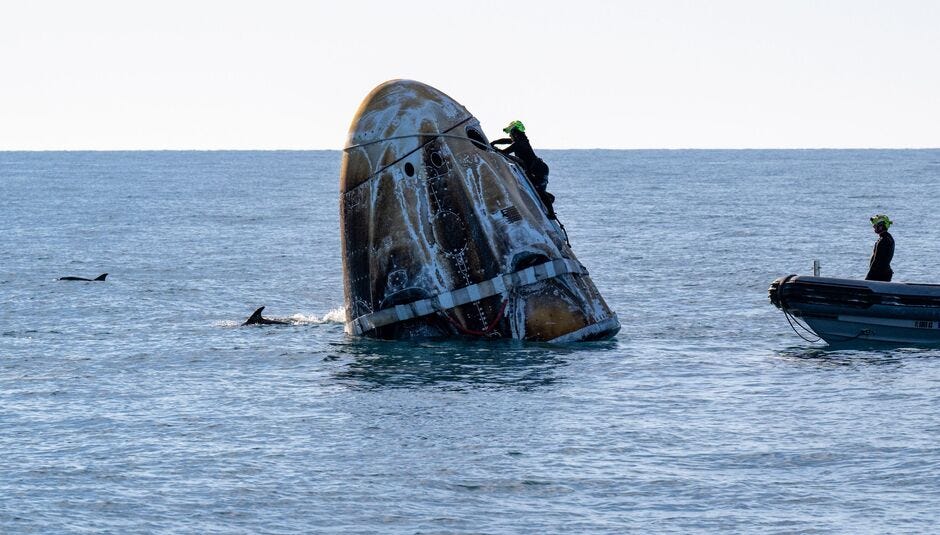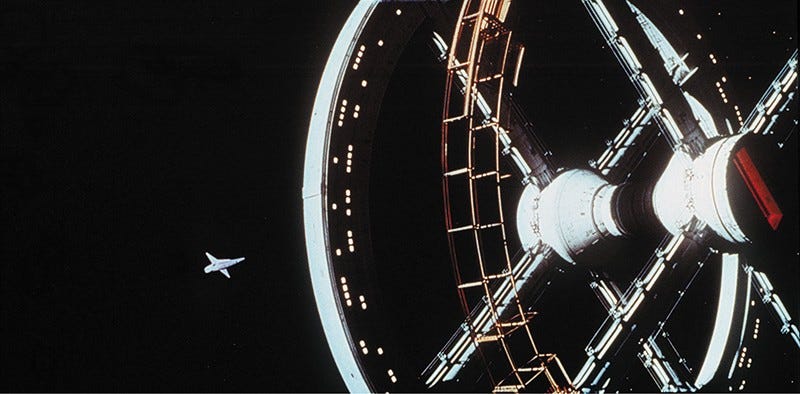286 Days in Space: What Happens to Your Body When You’re Up There That Long?
Two astronauts just got back from nine months stuck on the ISS, that much time in space messes with your body. Here’s what they’re facing now that they’re back on Earth.
On March 18, 2025, NASA astronauts Sunita "Suni" Williams and Barry "Butch" Wilmore safely returned to Earth after spending an insane 286 days aboard the International Space Station. They were originally scheduled for just over a week in space however the two astronauts ended up staying in orbit for more than nine months due to persistent issues with Boeing’s Starliner capsule.
When it became clear that a safe return via Starliner wasn't going to happen, NASA coordinated with SpaceX to bring them back home aboard a Dragon capsule. Their return marks the end of an unplanned endurance mission and opens up a wealth of new data on the effects of long-duration spaceflight on the human body.
Astronauts train for years to handle the harsh realities of space but nothing fully prepares the body for almost a year in microgravity. From physical to psychological stress, the human body undergoes drastic changes when removed from Earth’s gravitational pull. Some of those effects are temporary and reversible. Others can leave a lasting mark. Let’s go through what they’ll need to endure thanks to this extended space trip.
Muscle Atrophy and Strength Loss
One of the first things that begins to break down in space is muscle mass. In microgravity, the muscles that typically support the body against gravity, especially in the legs, core, and lower back, don’t get used nearly as much. As a result, astronauts begin to lose muscle strength within days of arriving in orbit.
Even with the exercise routines designed to counteract this, including resistance training, treadmill workouts, and cycling, there is only so much that can be done. Over the course of 286 days, the cumulative effect of reduced load-bearing activity takes its toll. When astronauts return to Earth, many struggle with balance and movement initially. It can take weeks or even months of physical rehabilitation to restore strength and stability.
We could solve this with rotating space stations, that would allow us to simulate 1G of gravity by the use of centripetal force. This idea isn’t anything new, we even saw it onboard the Odyssey in Stanley Kubrick 2001: A Space Odyssey.
Bone Density Reduction
Muscles aren’t the only part of the body that suffer from disuse. Bones also begin to lose mass, particularly in the hips, spine, and legs. NASA studies show astronauts can lose 1 to 2 percent of their bone density per month in space. Over nine months, that loss becomes significant.
The longer the duration, the greater the risk of fractures and long-term skeletal issues. What makes this more challenging is that regaining lost bone density is a slow process. It often requires months of weight-bearing exercise and proper nutrition on Earth, and in some cases, the density never fully returns to pre-flight levels.
Vision and Intracranial Pressure
One of the lesser-known but very real effects of long-term spaceflight is the impact on vision. Known as Spaceflight-Associated Neuro-Ocular Syndrome (SANS), this condition results from fluid shifting upwards towards the head in the absence of gravity. This shift increases intracranial pressure, which can press on the optic nerve and flatten the eyeball.
Some astronauts report blurred vision during missions. In others, structural changes in the eye are visible via scans. While not everyone is affected the same way, the condition is now considered one of the key health concerns for future missions to Mars and beyond.
Cardiovascular Changes
In space, the heart doesn’t have to work as hard to pump blood through the body. That might sound like a good thing, but over time, the heart can actually begin to shrink. Reduced cardiac output, lower blood volume, and orthostatic intolerance (the inability to stand up without feeling dizzy or faint) are all issues astronauts may face upon return.
To combat this, astronauts wear compression garments during re-entry and sometimes even salt-load their systems before coming home to help retain fluids. Even so, recovery can be slow, and full cardiovascular function may take time to re-establish.
Radiation Exposure
One of the biggest long-term risks of extended spaceflight is radiation. The ISS orbits within Earth’s magnetosphere, which offers some protection, but astronauts are still exposed to much more radiation than they would be on the surface. This includes galactic cosmic rays and solar particle events.
Over a nine-month mission, that exposure adds up. Increased radiation has been linked to higher risks of cancer, cardiovascular disease, and cognitive decline. Shielding on the ISS helps, but it’s not perfect, especially when you’re living in that environment for nearly a year.
Immune System Dysregulation
Space travel can throw the immune system out of balance, studies show that astronauts have altered white blood cell counts and decreased immune response during long missions. At the same time, dormant viruses like Epstein-Barr and herpes can reactivate in space.
This immune dysregulation isn’t fully understood yet, but it points to another area of concern. Astronauts aren’t just fighting the effects of a hostile environment; their own bodies are reacting in unpredictable ways to prolonged exposure.
Mental Health and Cognitive Load
It’s not just the body that suffers in space. The mind does too. Isolation, confinement, disrupted sleep cycles, and the pressure of living in a high-stakes environment can all take a toll on mental health.
Astronauts have access to mental health support, including remote counselling and activities designed to reduce stress. But over nine months, even the most resilient individuals can struggle. Maintaining performance and focus for such a long duration without breaks or a change of environment is mentally taxing.
Some symptoms don’t surface until after returning to Earth. Difficulty adjusting, sleep issues, and mood swings can all occur as astronauts re-acclimate to normal life. NASA takes post-mission psychological monitoring seriously, and it remains a key factor in astronaut care.
What’s Next?
Now that Williams and Wilmore are back on solid ground, the real work begins. Their health will be closely monitored over the coming months, not just for their own recovery but to contribute valuable data to NASA’s Human Research Program. That data will help refine protocols and technology for future missions, including potential trips to the Moon and Mars.
Physical therapy will be part of their routine. They’ll also undergo bone density scans, cardiovascular tests, eye exams, and bloodwork. If any latent issues arise—vision problems, neurological symptoms, or signs of chronic radiation exposure—they’ll be documented and analysed.
Every astronaut that returns from a long-duration mission brings back more than personal experience. They carry data that informs the future of space travel. With private companies like SpaceX and Boeing now deeply involved in space logistics, these missions are no longer rare events. They’re a growing part of human exploration.
Looking to the future…
Spending nearly 300 days in space is a monumental achievement, but it comes at a cost. Muscle loss, bone deterioration, vision problems, cardiovascular strain, radiation risks, immune disruption, and psychological challenges all add up to a steep physiological bill.
NASA is working on solutions. Improved exercise protocols, better shielding, enhanced medical monitoring, and robust psychological support systems are all part of the equation. But as we aim for longer missions and eventually planetary colonisation, these health challenges will need to be fully understood and mitigated.
By surviving 286 days in orbit, Suni Williams and Butch Wilmore have become perfect test cases for what it really takes to live in space. The next frontier won’t be won by rockets alone. It will be won by understanding the fragile human body that rides inside them.
This is why it’s important that if the destiny of mankind is really among the stars, then we must accelerate the development to grander designs for our space transport providing us with simulated gravity via centripetal force, better radiation shielding, internet connectivity and other amenities that will help us deal with life in space, and actually live, rather than just exist.








An incredible reminder of how dependent our existence is on the environment that we evolved to live in harmony with. Taking to space and the eventual colonisation of other planets will likely be a bleak & miserable existence for the first generations. Life is challenging enough without having to battle a hostile environment.